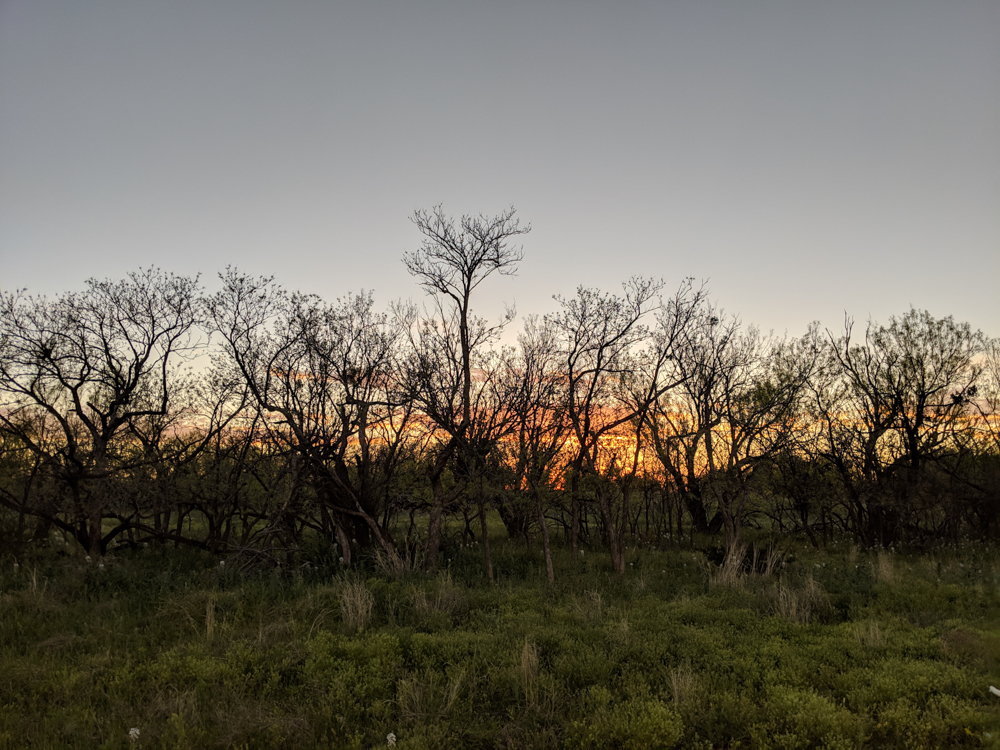Turkey Hunting 101: Navigating the Spring Turkey Season
Ask any group of hunters their favorite part about spring turkey season, and you’re likely to get many different answers. For some the season represents the first opportunity to reconnect with nature after a long winter — crisp morning air giving way to warmer, sun-drenched afternoons, the landscape blanketed in shades of green representing new growth and speckled with the bright hues of blooming wildflowers. For some it’s the chance to engage in conversation with gobbling birds, while others relish in the opportunity to witness the wild turkey’s extravagant courtship display.

Wild Turkey Species
There are four primary wild turkey species found across the 48 contiguous states and Hawaii — the Eastern, the Rio Grande, the Merriam’s, and the Osceola turkey. Species exhibit variations in size, coloration, vocalizations, and behavior, reflecting their adaptation to different ecological niches across their respective ranges.
Habitat & Biology
If wild turkeys have food, a reliable, clean water source, and cover, they are capable of thriving in a wide range of habitats:
- Hardwood forest
- Open woodlands
- Grassy meadows
- Agricultural fields
- Riparian areas
- Ridges and valleys in more mountainous regions.
They are omnivorous birds who feed on a variety of plants such as grasses and seeds as well as protein-rich sources like insects, spiders, and snails. Turkeys spend the night roosting high in trees, usually within close proximity to water. They demonstrate a preference for strong branches with dense foliage that offer them both protection from predators and good visibility for detecting threats.


Finding Birds
The spring season varies by state and hunting district and can start as early as March and remain open through the month of May in some areas. State wildlife offices can help you purchase the correct hunting licenses and can provide season dates and regulations as well as turkey habitat and distribution maps. From there, boots on the ground scouting ahead of the season can give you an idea of where to start. A typical scouting trip involves sneaking into the woods well before dawn and listening for turkey sounds. Since turkeys will typically gobble on the roost, a typical scouting trip involves sneaking into the woods well before dawn and quietly listening for turkey gobbles, a clue to where their roost area is. After sunrise, look for visual signs like droppings, tracks, and feathers to determine if there are birds nearby. If you’re finding sign near tall, sturdy trees, this is a clue you may have found their roosting area. Understanding turkeys’ patterns is the next step to a successful hunt. Turkeys come off the roost in the morning and typically make their way to feeding areas during the day, and they return, often to the same roost trees, by nightfall.

The Strutting Spectacle
While some states have a fall turkey season, many hunters prefer to hunt turkeys in the spring when the males (known as toms or gobblers) are engaged in an impressive courtship display known as strutting to attract a hen (female) for mating purposes. Strutting is a flamboyant behavior where the tom puffs out his feathers, fans his tail and drags the tips of his wings as he walks about. The tom’s head may also turn bright shades of blue, red and white as he both puffs and deflates the air sacs in his neck. For some hunters, witnessing such a display is sometimes more rewarding and sought after than the harvest itself. In the spring season, it is almost always illegal to shoot hens, and positively identifying your target is a responsibility each hunter should take seriously. Observation of this ritual is one way to positively identify your target as male, but it is important to feel confident in distinguishing between the sexes independent of strutting behavior.
Gobble Gobble
Strutting is also often accompanied by a low-frequency drumming sound and most recognizably, by gobbles. Only male turkeys gobble, usually to let hens know he is in the area and available, hoping she will walk over for a visit. As a hunter, the gobble is one of the most powerful tools for locating turkeys.
Calling Turkeys
Toms will often gobble in response to hens’ vocalizations, and a spring turkey hunter’s most effective hunting tool is arguably the hen call. Hen calls come in several different styles and most are capable of producing a variety of sounds like clucks, yelps, and purrs. There’s no perfect call and hunters often use more than one during a hunt. Finding the roost area can be a great advantage to hunters, since a popular strategy is to set up near roosting trees (at least 50 yards away) before daylight, and to listen until a bird flies down. This is when hunters have the best chance of calling a tom into range, before he has begun courting a group of hens. On occasion, curiosity prevails and can cause a gobbler to stray from his female audience, but it’s easier to get their attention before they are part of a group. Hens may become curious as well and respond to the calls, coming close to a well-camouflaged, still and quiet hunter. Patience prevails as there may be a gobbler in tow.

Types of Calls
While not an exhaustive list, four of the more common types of hen calls you will see are:
- Push button calls are a great option for beginners. To operate, the hunter pushes on a spring-loaded wooden rod and sound is created through friction created against the wooden body of the call
- Box calls are made of wood and have a hinged lid that when slid against the edge of the box produces sound
- Slate or pot calls have two pieces — a circular disc, often made of slate, ceramic or glass and a wooden striker which when rubbed against the surface of the disc can elicit an array of sounds and tones.
- Diaphragm or mouth calls arguably have the steepest learning curve, but they are a great option for making hen sounds without requiring hand movements that may give away your location to approaching toms.
Online videos are a great option for both familiarizing yourself with the mechanics and operation of the calls and for beginning to recognize and to reproduce the different sounds hens tend to make.
Other Calling Options
Mimicking the gobble is also a way to get toms vocalizing. Gobbles from one tom often elicit sounds from another as he announces his presence and tries to lure hens away from his rivals. Locator calls are meant to elicit a shock gobble where a tom will vocalize in response to a sudden noise like sounds from a crow or owl. It is not unusual for a hunter to elicit gobbles by closing the door of the truck.
Clothing
Spring turkey hunting is often limited to taking turkeys with a shotgun or bow, both of which require a relatively close range to be both ethical and successful, so remaining disguised within your surroundings is key. Turkeys tend to be wary birds, and camouflage clothing and accessories are essential for countering their exceptional vision and hearing. Camouflage patterns will vary by specific habitat, but hunters will typically wear the following:
- Pants and long sleeve tops (women’s options: pants, top)
- Gloves
- Face masks
- Hats
Because these birds can see color, hunters should take care to avoid colors like white, red, and blue that can mimic the pigmentation of a tom’s head — this also becomes a safety precaution by preventing target misidentification by other hunters.


Additional Gear and Tactics
Generally, your weapon, a good disguise, and a hen call are the basics you’ll want to get started, however there are plenty of other tools marketed to turkey hunters.
- Turkey vests tend to be popular. They keep a hunter’s calls organized and readily available in front pockets and sometimes include a dropdown padded seat.
- Depending on the terrain and situation, hunters may use a hen decoy which can provide a visual focal point to draw toms into range, but it’s important to check local hunting regulations as the use of decoys is not legal everywhere.
- Some hunters also choose to set up in a ground blind for extra cover.
Turkey hunting demands patience and perseverance as hunters try to speak the language of the wild turkey and anticipate their behaviors. Even the most skilled turkey caller, perfectly concealed in camouflage, isn’t guaranteed a successful harvest. Turkey hunting requires a level of woodsmanship, cultivated through experience — knowing when to wait, to listen and to watch, understanding the best times to move, to call and how to select the ideal position.
Perfecting this dance is a lifelong pursuit of those who love turkey hunting, one where there is no substitute for experience and time in the woods. Like all hunting, the harvest is often the desired outcome, but admiring the new growth of spring, taking advantage of the longer days, and witnessing a strutting tom’s extravagant courtship ritual can become cherished rewards and lifelong memories.

About the Gear Tester

Lauren Whiddon
Lauren is happiest waking up next to an alpine lake, snacking at the summit, floating down a river, and chasing bulls and bucks in Montana's vast wilderness. When not romping around outdoors, Lauren builds websites, teaches yoga, and volunteers on an organic farm. You can find her on Instagram @laurenrose_mt.



